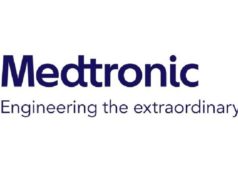
Performing a middle meningeal artery (MMA) embolisation procedure during the same anaesthesia session as a burr hole evacuation surgery represents a safe and potentially resource-efficient approach within the management of chronic subdural haematoma (cSDH).
This is the key finding of a retrospective review published recently in the Journal of NeuroInterventional Surgery (JNIS) by Charles Matouk (Yale School of Medicine, New Haven, USA) and colleagues.
“The development and evaluation of new approaches with the potential to improve the safety and efficiency of MMA embolisation in cSDH management is essential,” Matouk told NeuroNews. “The field is still in its infancy, and we have a lot of work to do to understand who will benefit most and how to streamline the patient experience.”
In order to evaluate preliminary experiences with this combined approach, Matouk and colleagues performed a retrospective review of all patients who underwent MMA embolisation and burr hole surgery during the same admission at a major academic institution in the US state of Connecticut between 2019 and 2024.
Patients were dichotomised by those undergoing both procedures during a single anaesthesia session (combined) or across two separate sessions (separate). The authors relay in JNIS that baseline demographics, comorbidities and complications were compared, with primary outcomes of the study being in-hospital and 90-day rates of complications and reoperations.
A total of 103 patients (median age, 74 years) were included in the study, with 33.9% of these patients being part of the combined cohort. Demographics, comorbidities and radiographic characteristics were ultimately found to be similar between the two study cohorts.
Matouk and colleagues relay that, while cumulative procedure times were similar between the combined (96 [82–127] minutes) and separate (85 [71–110] minutes) groups, the total anaesthesia time was “significantly longer” for patients undergoing separate versus combined procedures (225 [193–264] vs 165 [145–183] minutes, respectively; p<0.001).
The researchers found that there were no differences in the rates of in-hospital access site complications, reoperation, stroke or mortality between the cohorts—and, while the combined study cohort trended towards having a shorter length of stay compared to the separate procedure group (5 [4–7] vs 6 [5–8] days, respectively; p=0.058), there were no differences in complication or reoperation rates within 90 days either.
“We were high enrollers in one of the MMA embolisation trials,” Matouk commented. “As a result, I got to see firsthand how awkward it is to submit a patient for two procedures—and two rounds of anaesthesia—during the same admission. Now, we know that it is safe to combine the procedures. Whether it is equally as effective, or more effective, in preventing recurrences or reoperations compared to the standard approach remains to be determined.”









